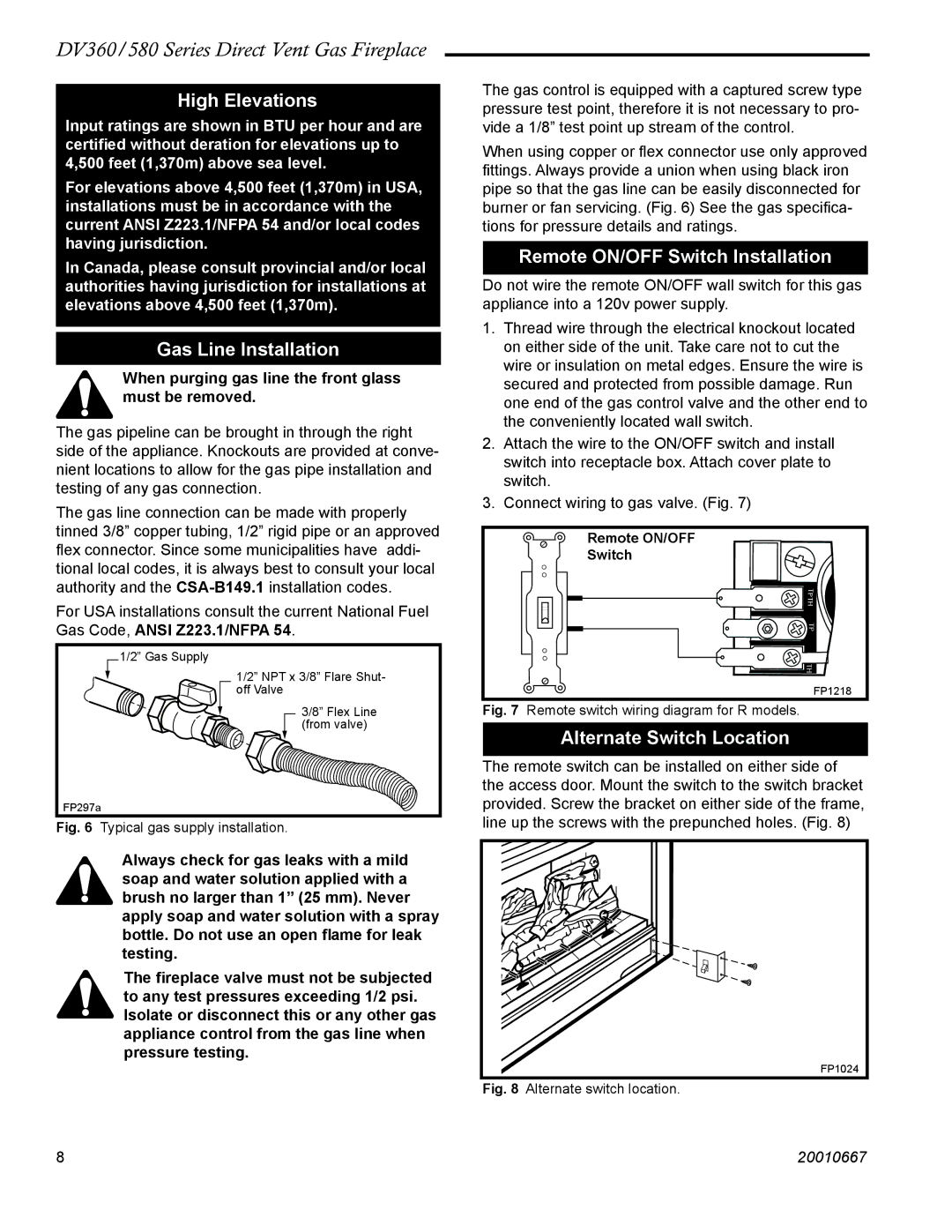DV580, DV360, DV360 specifications
Vermont Castings is a name synonymous with quality and craftsmanship in the world of fireplaces. Among their celebrated products, the DV580, DV360, and DV360 stand out for their advanced technology, efficiency, and aesthetic appeal. Each of these models offers unique features designed to enhance home heating while maintaining a focus on environmental responsibility.The DV580 is a powerful direct vent gas stove that seamlessly combines traditional aesthetics with modern functionality. With its large viewing window, it creates a cozy ambiance while allowing users to enjoy the mesmerizing flames. One of its main features is the advanced burner system, which provides a realistic flame appearance. This model also boasts an impressive BTU output, allowing it to heat larger spaces efficiently. The unit is equipped with an electronic ignition, ensuring reliable start-ups even in cold weather.
The DV360, a slightly smaller but equally efficient model, offers versatility for various home settings. With its compact design, it can fit into tighter spaces without sacrificing heating capacity. The DV360 features a unique dual burner system, which promotes a more even and consistent flame. Its direct vent technology ensures that all combustion byproducts are vented outside, maintaining indoor air quality. This model also includes an adjustable flame height, giving users control over the intensity of the heat and ambiance.
In addition to performance, both the DV580 and DV360 prioritize energy efficiency. They are designed to operate with minimal emissions, making them an environmentally friendly choice for homeowners. With a variety of finish options and customizable face designs, these models can complement any home decor. Another key characteristic is the straightforward installation process, which allows homeowners the benefit of having their unit up and running in no time.
Overall, the Vermont Castings DV580, DV360, and DV360 models exemplify a harmonious blend of innovation, functionality, and style. They not only provide warmth but also contribute to the overall aesthetic of any space. With their commitment to quality and performance, Vermont Castings continues to set the standard for direct vent gas stoves, ensuring customers enjoy the best of both worlds: comfort and beauty in their homes.

